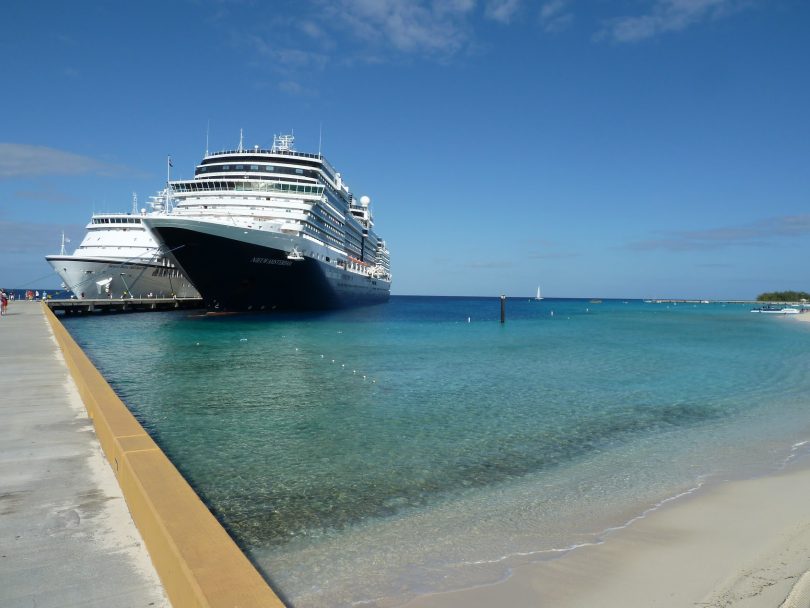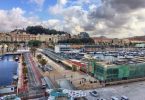On Grand Turk — our first stop — we skipped the ship’s canned excursions and booked our own taxi around the island.
There are only two destinations: Front Street and the lighthouse.
Front Street is a block or two of unpolished attractions. Just beyond the deserted Museum of National History, past one or two dubious historic homes, lies a ramshackle building, the lower floor of which is home to three or four tiny shops.
On one end, an earnest local woman sells linens: doilies, tablecloths, sheets. Next door, a younger woman sells sundries: bottled water, dusty Christmas bulbs, plastic knick knacks. Third, there is a beauty salon (three seats, five dryers, no customers). Finally, there is a dark little restaurant, where hand-written menus suggest fried conch and the catch of the day.
Across the street, four colorful kiosks sell lukewarm beverages, t-shirts, and hair braiding.
Wandering through this takes all of ten minutes
Back in the taxi, we travel another ten minutes to the lighthouse: a rusting, weatherbeaten, but still functioning edifice. It was built to warn ships about the reef that runs along the northern edge of the island. (“It has claimed more than two hundred ships,” our taxi driver tells us.) The lighthouse is sealed, so we cannot ascend the stairs to the top, but we piddle around in the hilly green yard and peer out at the undulating blue sea.
On the way back to the ship, our driver steers us through several neighborhoods, all of which are laced with boarded, dilapidated homes in various states of disrepair. “It was Ivan,” the driver explains, referencing the hurricane that crossed directly over this flat stretch of land back in 2008. “It destroyed 95% of everything,” he says. “Homes, businesses. All of this you see now has been put up since then. Many homes are unfinished, because people cannot afford to rebuild. They do what they can, and they live with their families.”
He returns us to Royal Caribbean’s Cruise Center, a glitzy, open air mall built by the cruise line at a cost of $61 million dollars. “Many guests,” our brochure assures us, “never choose to leave the Cruise Center.” We are certain this is exactly what the cruise line hopes will happen, because the Cruise Center is nothing more than a fancy extension of the stores and shops aboard our ship, and is owned and operated by the very same company.
And it’s true: very few of our fellow cruisers have left the safety of the Center, where they wander from the Ron Jon surf shop to the Margaritaville bar, browsing brand-name trinkets and beach wear at very safe, very approachable, very “sanitized for your protection” stores that are not too different from the shops found back home in any suburban mall.
Front Street is not, by any stretch of the imagination, a shopper’s paradise, and the little lighthouse is not, by any definition of the word, an attraction. But I had more fun on Front Street and at the lighthouse than I could ever have in the Cruise Center, where the gleaming plastic and concrete facades have more in common with a Disney park than Grand Turk Island.
Given the choice between browsing in a dusty little shop perched on the edge of a pounding blue ocean or spending several hours in a candy-colored, pre-fabricated mall … I’ll choose the authentic experience every time.
When I go someplace, I want it to be someplace real.




